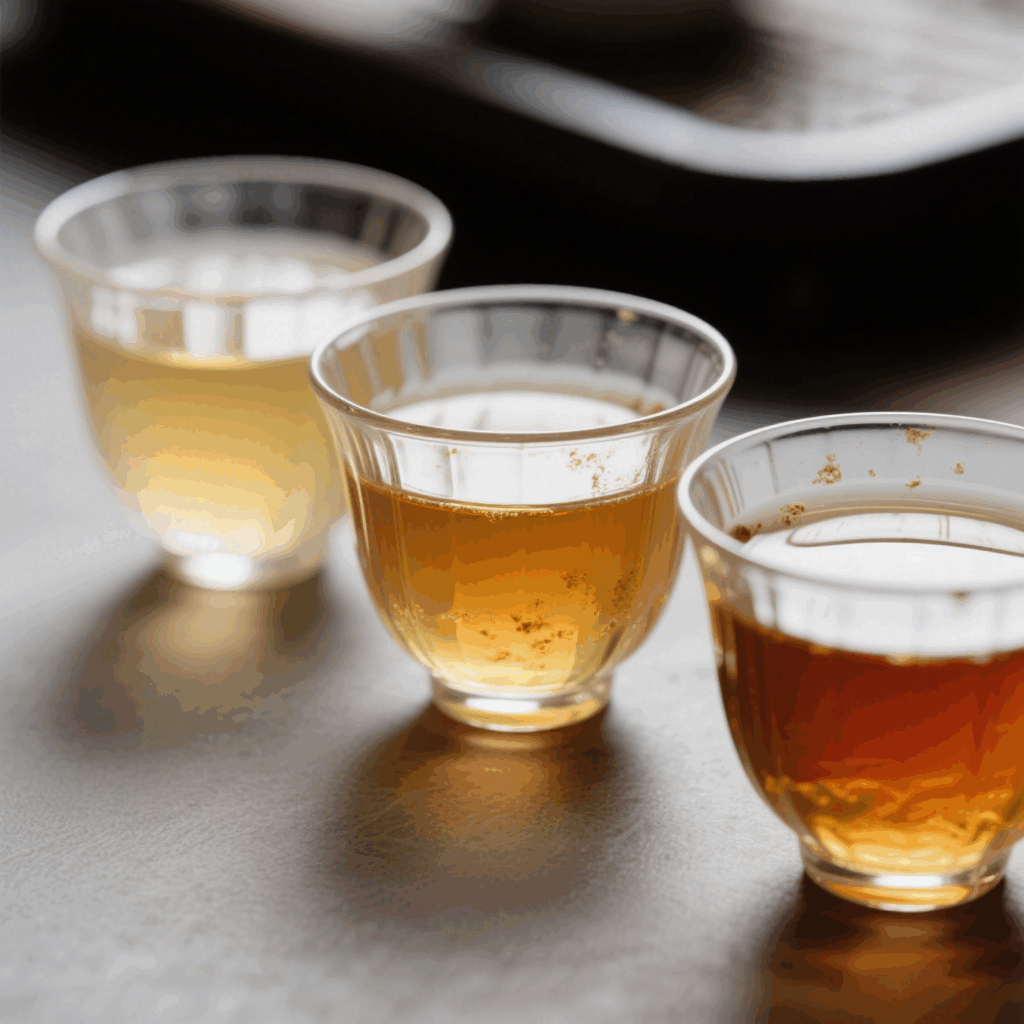Introduction
Tea is rich in antioxidants, which help combat oxidative stress and promote health. But did you know that the color of tea liquor can indicate its antioxidant levels? By observing the hue, brightness, and depth of tea, you can estimate its polyphenol content—without lab tests.
This guide explains how different tea colors correlate with antioxidant strength and how brewing methods affect them.

The Science Behind Tea Color & Antioxidants
1. Key Antioxidants in Tea
Tea contains catechins, theaflavins, and thearubigins, which contribute to both flavor and color.
- Green Tea (Pale Yellow-Green): High in EGCG, a potent antioxidant.
- Oolong Tea (Golden-Amber): Contains partial oxidation compounds.
- Black Tea (Deep Red-Brown): Rich in theaflavins and thearubigins.
2. How Oxidation Affects Color & Benefits
- Low Oxidation (Green/White Tea): Lighter color, more preserved catechins.
- Medium Oxidation (Oolong Tea): Amber tones, balanced antioxidants.
- Full Oxidation (Black Tea): Darker hues, higher theaflavins.
How to Analyze Tea Liquor Color for Antioxidant Value
1. Observing the Hue
- Pale Yellow/Green: High in EGCG (green/white tea).
- Golden Amber: Moderate antioxidants (oolong tea).
- Deep Red-Brown: Strong theaflavins (black/fermented tea).
2. Clarity & Brightness
- Brighter Liquor: Fresher leaves, higher antioxidant retention.
- Dull or Cloudy: Possible over-brewing or lower-quality leaves.
3. Color Changes Over Time
- First Infusion: Strongest color = highest antioxidant release.
- Later Infusions: Lighter = fewer remaining polyphenols.
Brewing Tips to Maximize Antioxidants
1. Water Temperature Matters
- Green Tea: 70-80°C (158-176°F) to preserve catechins.
- Black Tea: 90-95°C (194-203°F) to extract theaflavins fully.
2. Steeping Time Control
- Short Steeps (1-3 min): Retains brightness and antioxidants.
- Long Steeps (5+ min): Darker but may lose some benefits.
3. Leaf-to-Water Ratio
- More Leaves = Stronger Color = Higher Antioxidants.
- Standard Ratio: 1 tsp per 200ml (6.7 oz) water.
Common Misconceptions About Tea Color
❌ ”Darker Tea = Always Stronger Antioxidants”
- Not always true. Over-brewing can degrade polyphenols.
❌ ”Light Tea Has No Benefits”
- White tea is light but packed with amino acids and catechins.
❌ ”All Black Teas Have the Same Antioxidants”
- Fermentation levels vary—some black teas retain more polyphenols.
Conclusion: Using Color as a Guide
While lab tests provide exact antioxidant values, tea liquor color is a practical indicator. By understanding how oxidation, brewing, and leaf quality affect hue, you can make smarter tea choices for health benefits.
Next time you brew tea, observe the color—it might reveal more than you think!
